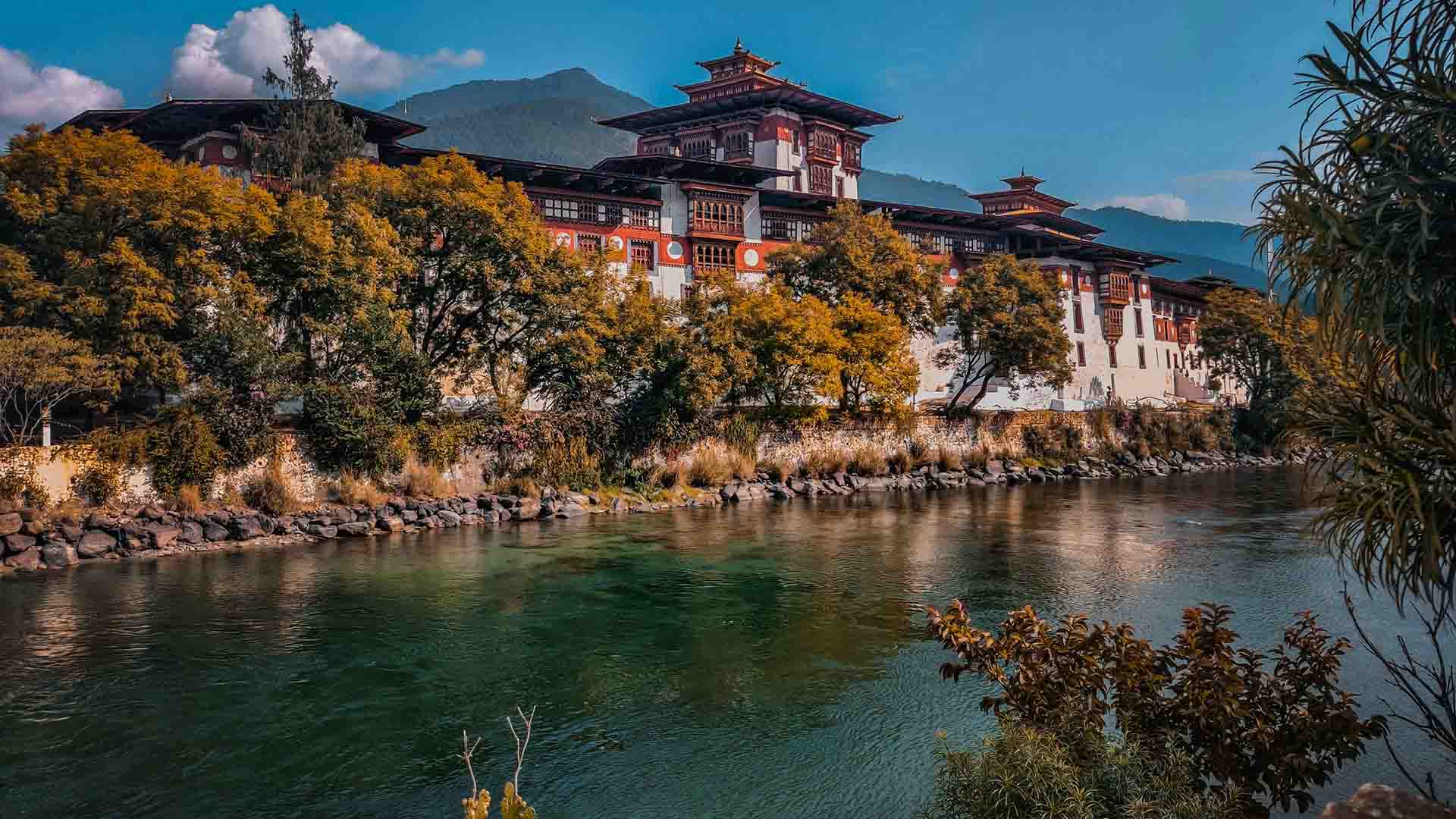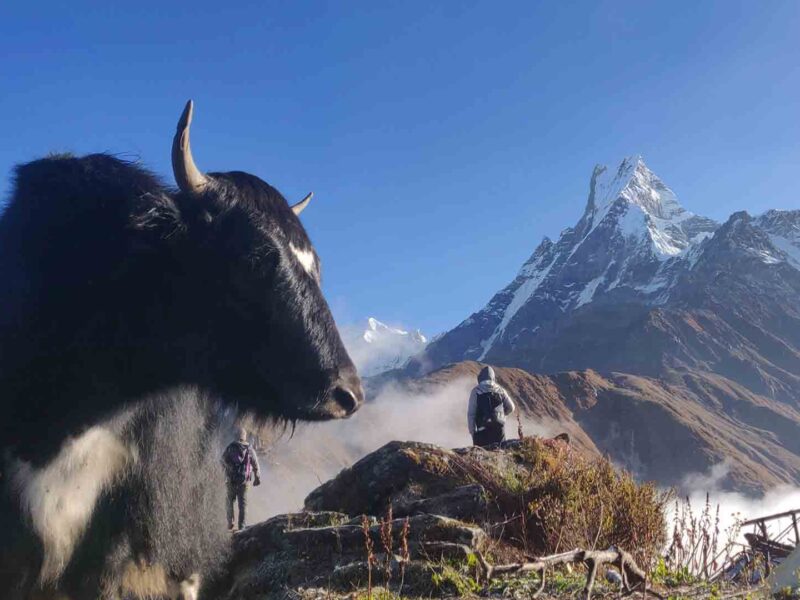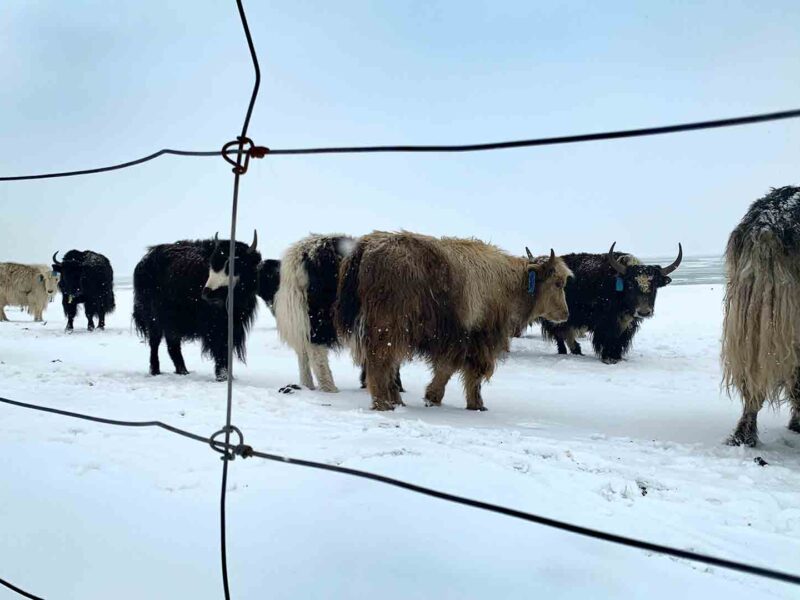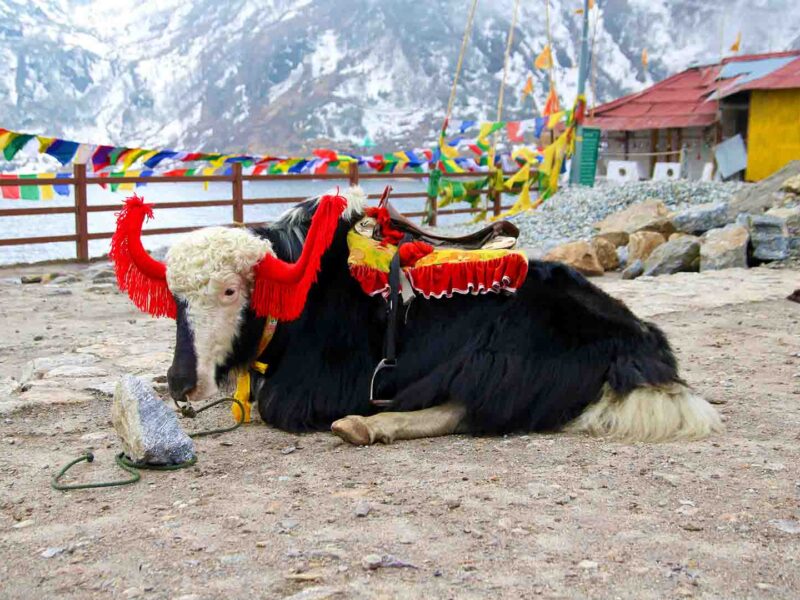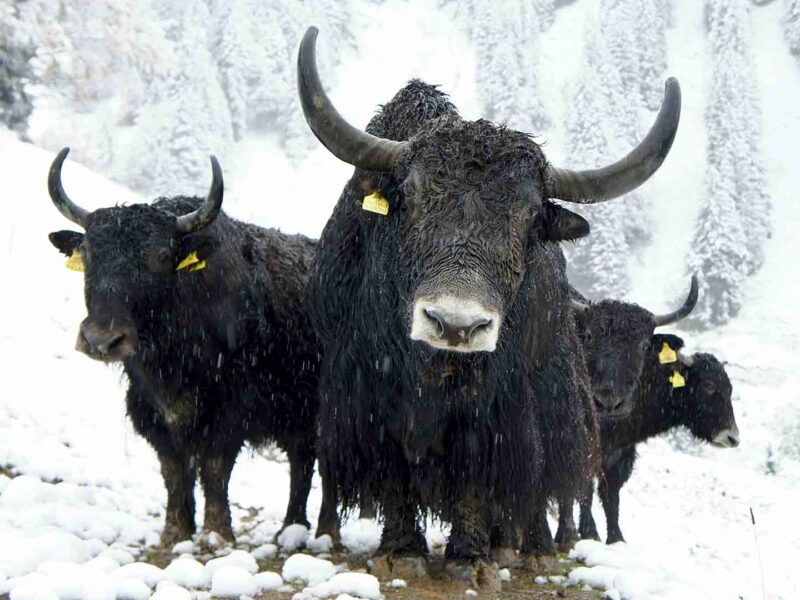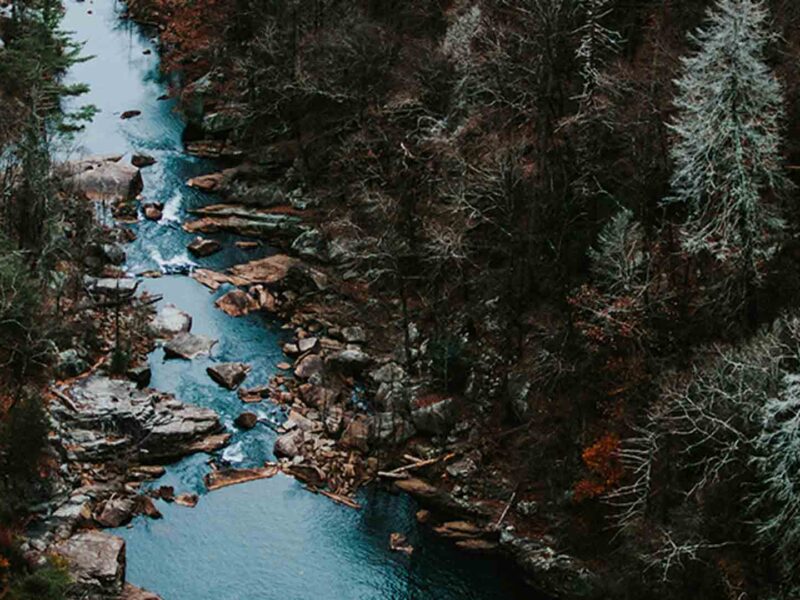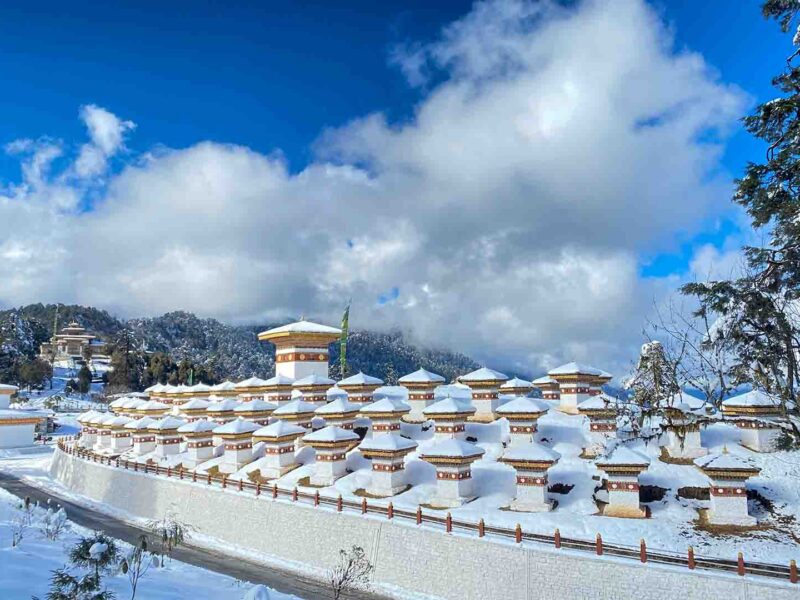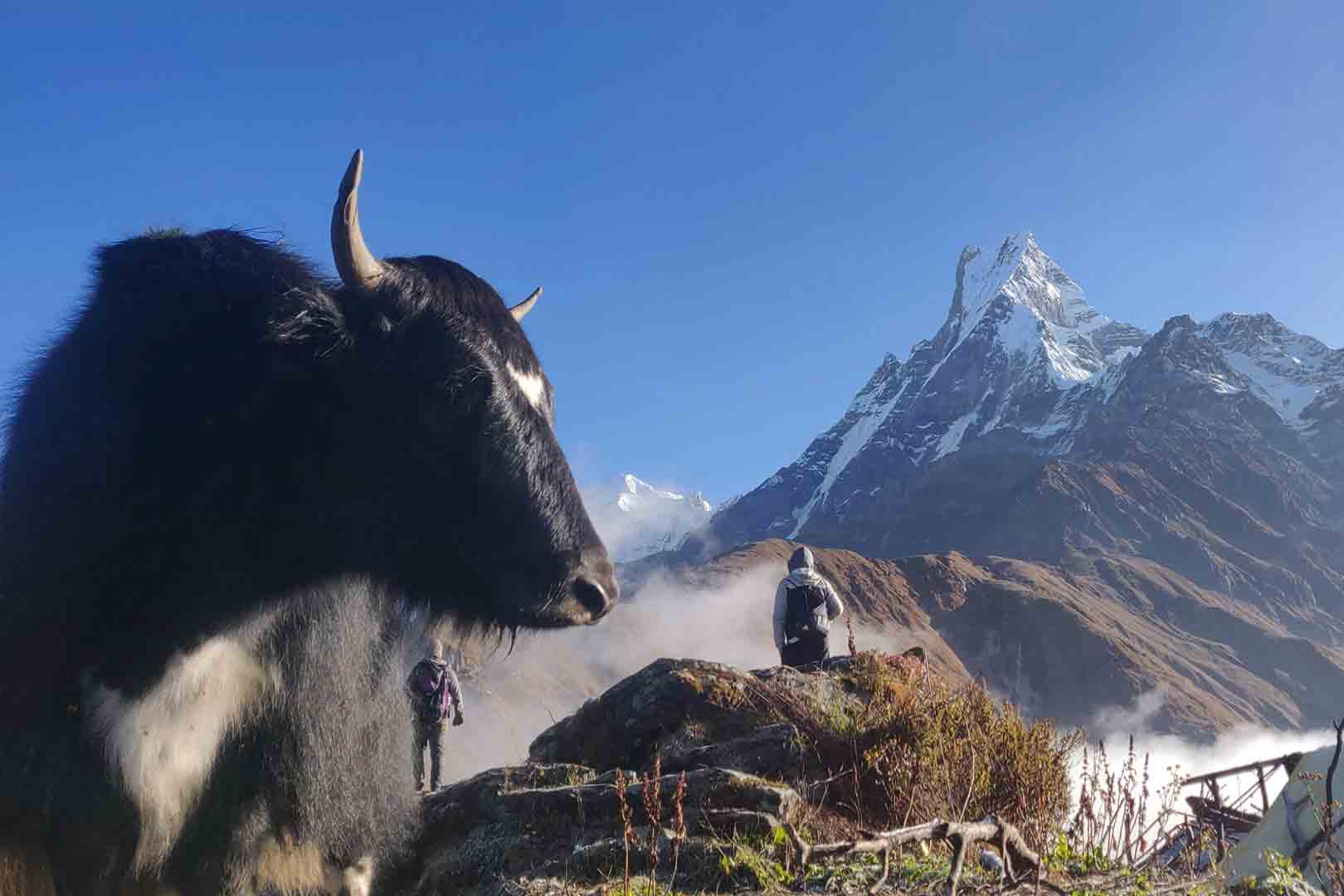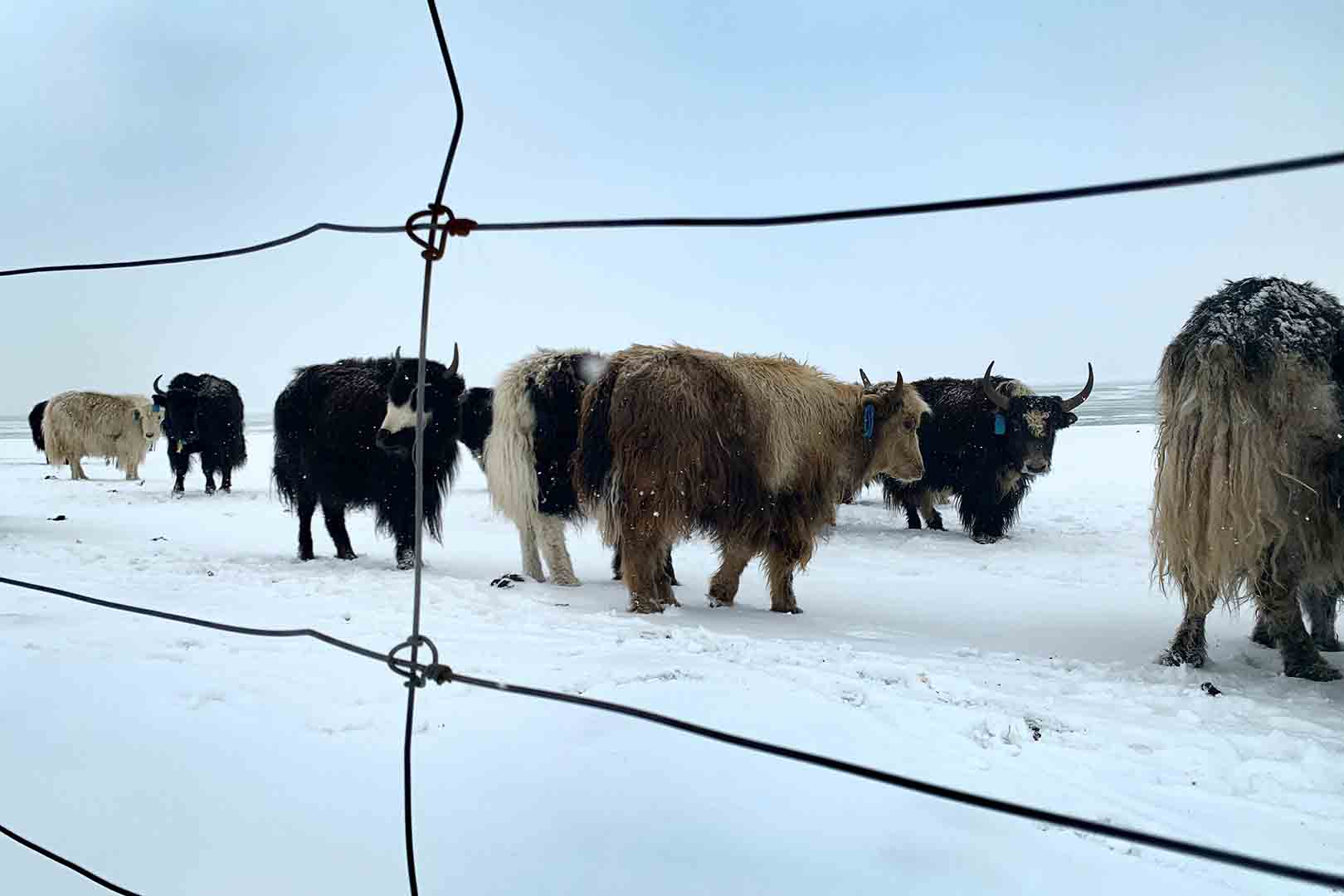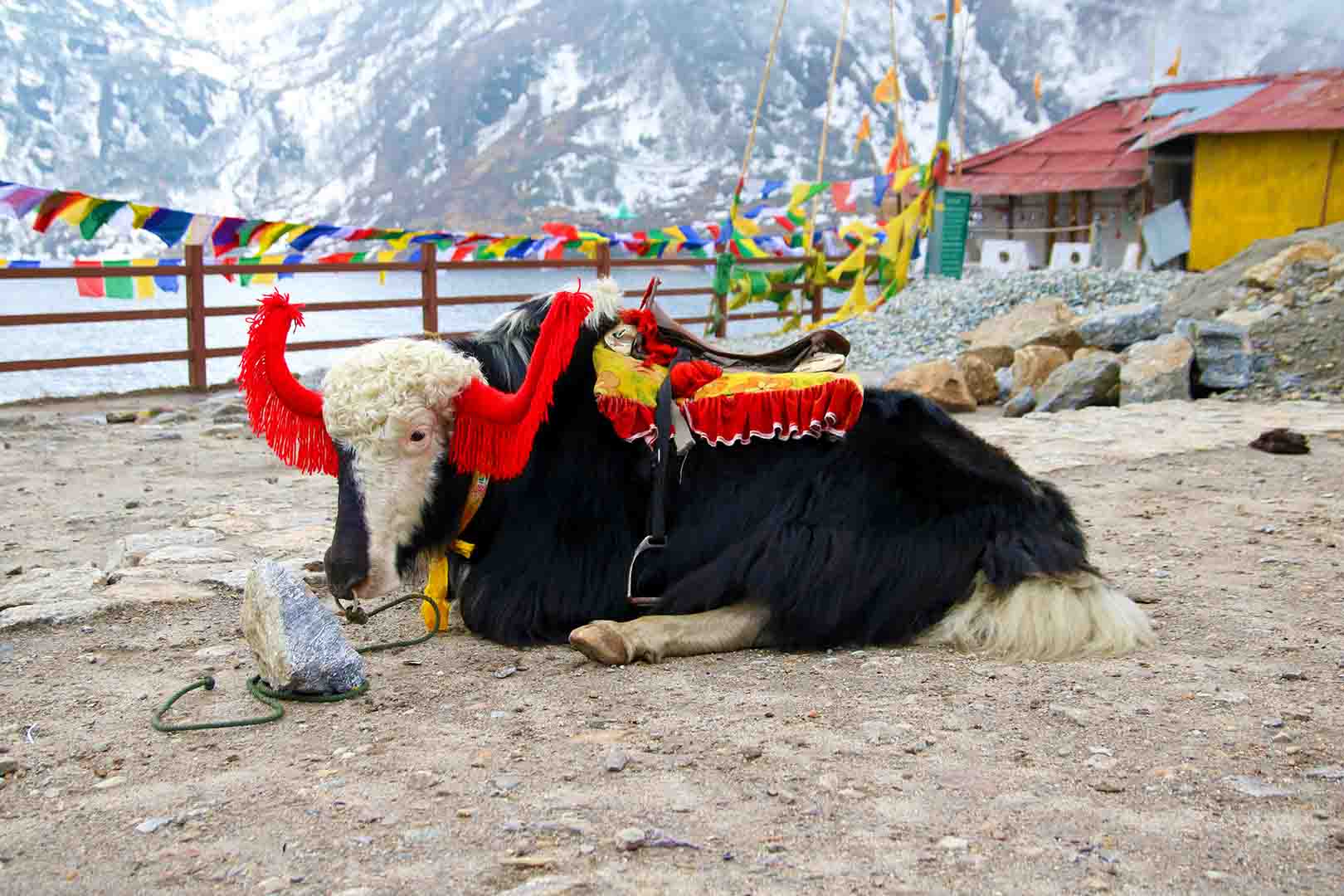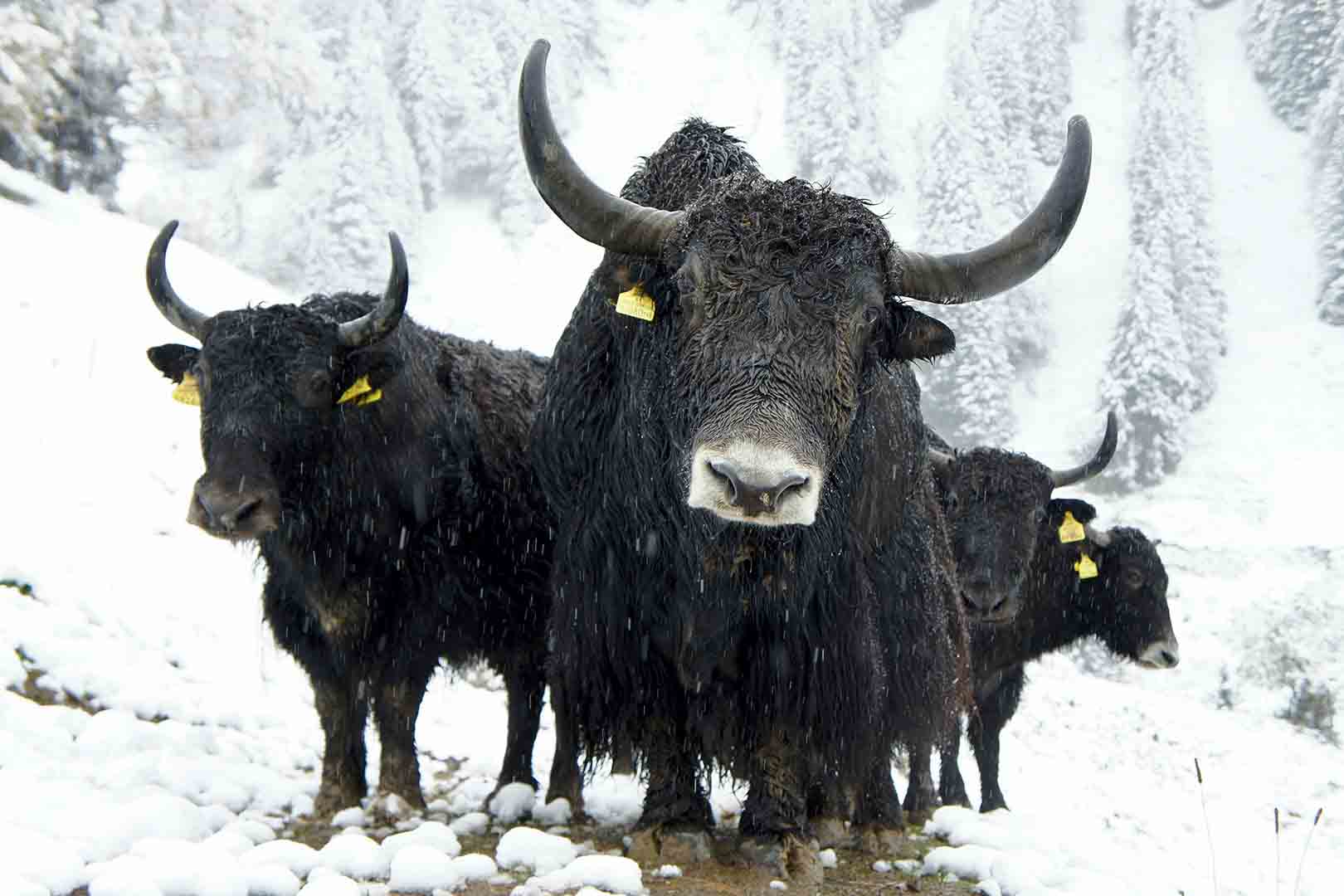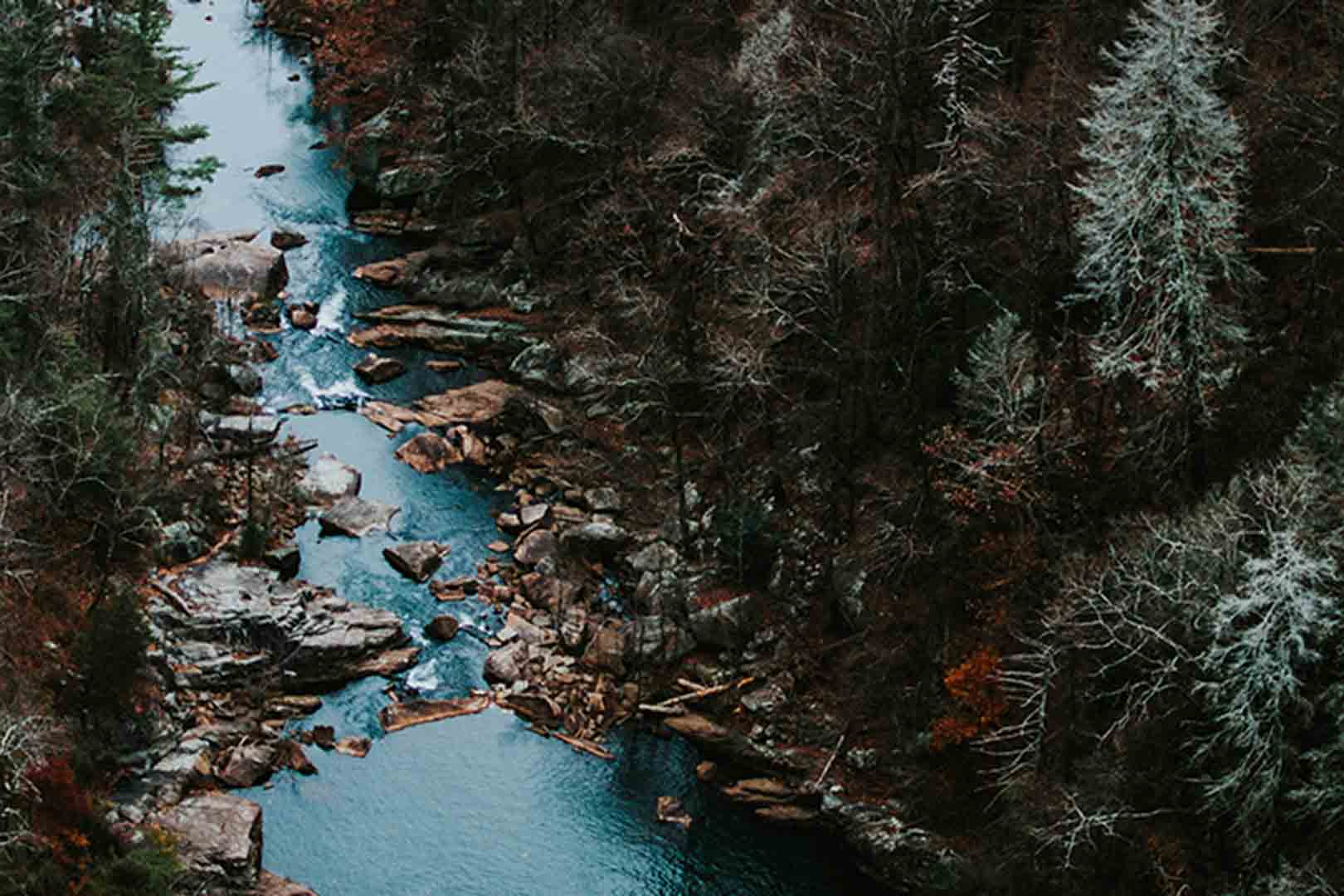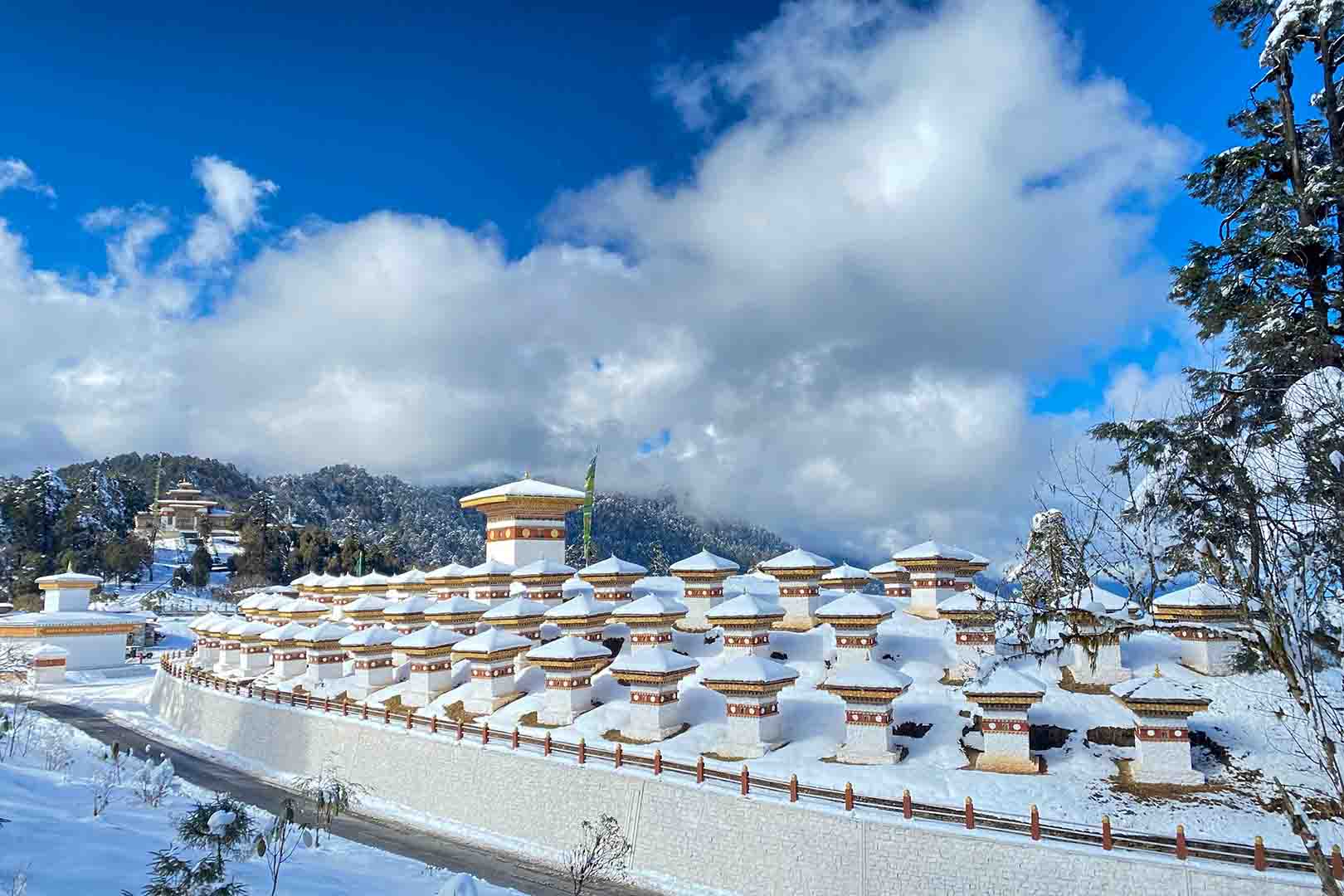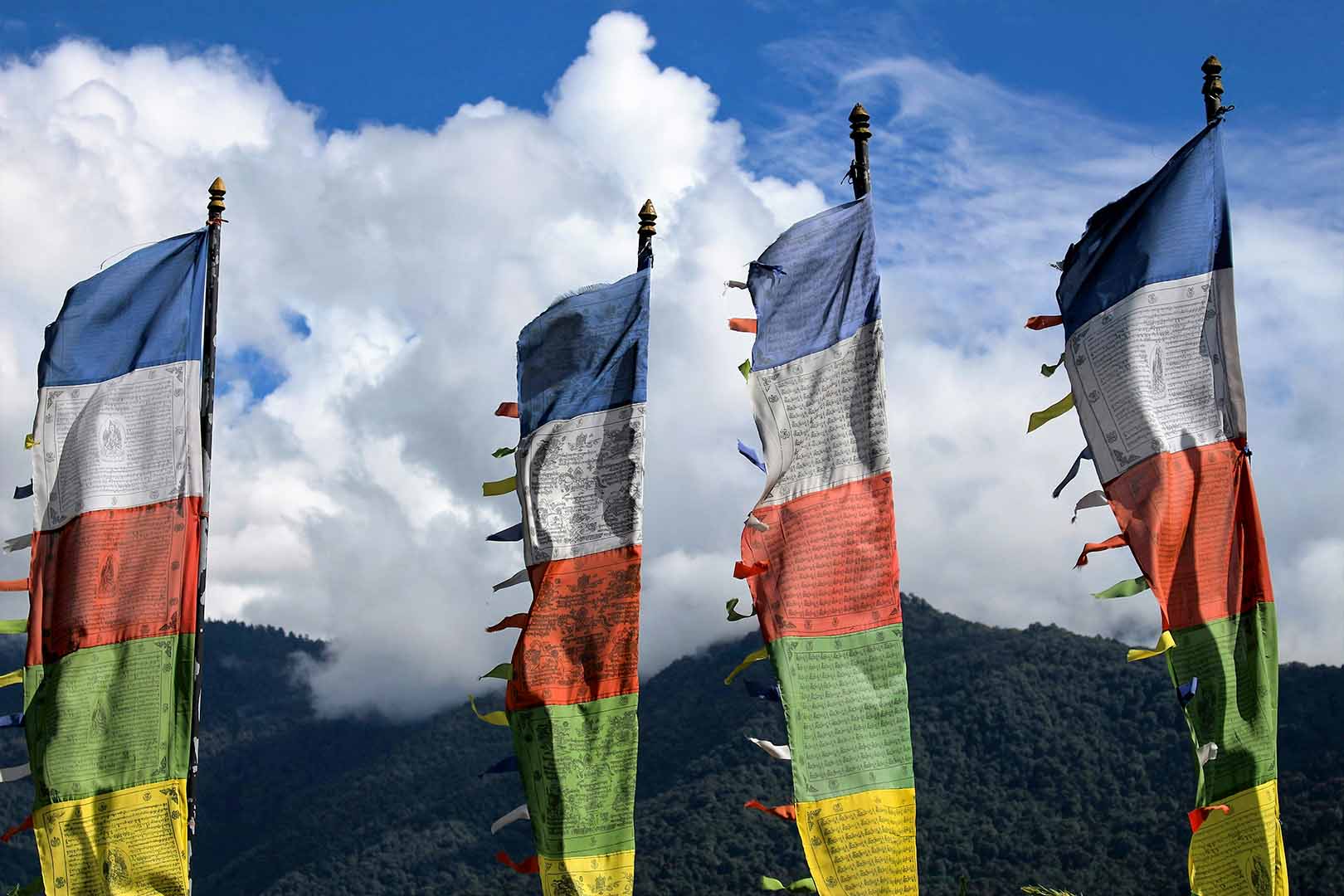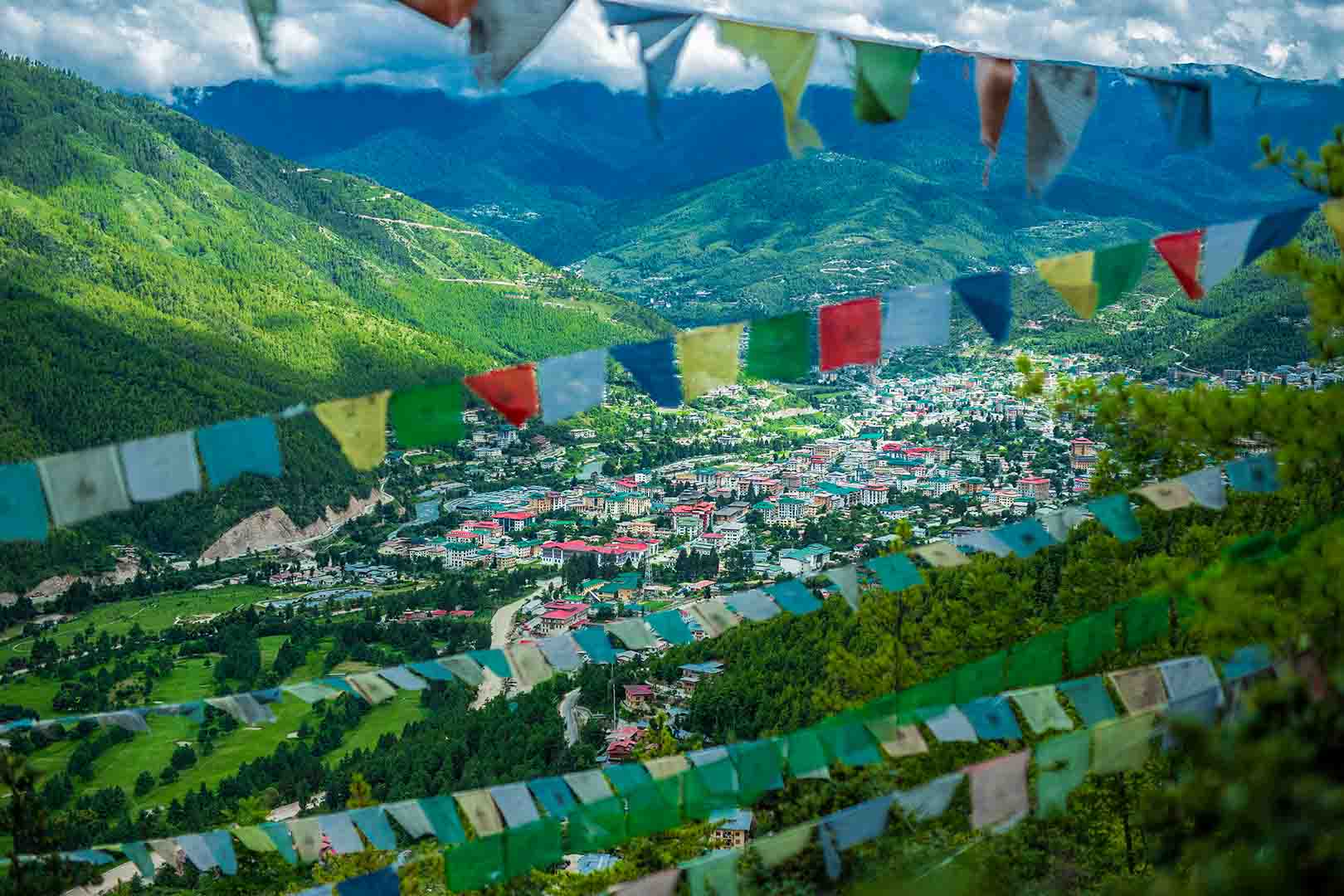Druk Path Trek
$3200
per person
Embark on an unforgettable 10-day adventure through the mystical landscapes of Bhutan, where ancient traditions meet stunning natural beauty.
The Druk Path Trek is a six-day adventure leading from Paro to Thimphu, crossing the mountain chain that separates the two valleys. This trek offers stunning views of the Himalayas, pristine lakes at 4000 meters (13,000 feet) teeming with fish, and a rich display of rhododendron forests. It is best undertaken from October to November and March to May.
Tour Highlight
- Day 1: Arrive Paro | Explore Paro
- Day 2: Hike to Tiger’s Nest Monastery
- Day 3: Begin Druk Path Trek | Trek to Jele Dzong
- Day 4: Trek to Jangchulakha
- Day 5: Trek to Jimilangtso
- Day 6: Trek to Simkota
- Day 7: Trek to Phajoding
- Day 8: Trek to Thimphu
- Day 9: Full Day Sightseeing in Thimphu
- Day 10: Thimphu – Paro – Depart
Cost Includes on Trek
- Accommodation in sleeping tent on twin sharing basis (sleeping bags to be brought along by the trekkers themselves)
- Toilet tents
- individual sleeping mat
- camp fee
- Trekking permits
- Hot meals – breakfast, lunch & dinner
- Kitchen staff (cook/waiters/dish washers)
- Licensed & certified English speaking trekking guide
- Horses, Ponies & porters
Tour Does not Includes
- Air fairs
- Drinks
- Laundry
- Medical and travel insurance
- Expenses of personal nature
-
Destination
-
Departure
Paro
1
Day 1: Arrive Paro | Explore Paro
- Arrival: Upon arrival at Paro International Airport, clear customs and immigration. Your guide and driver will meet you outside the terminal.
- Sightseeing: Visit the National Museum and Paro Dzong, depending on available time.
- Accommodation: Overnight stay in Paro.
2
Day 2: Hike to Tiger’s Nest Monastery
- Morning: After breakfast, drive to the trailhead and hike to the famous Taktsang (Tiger's Nest) Monastery, perched on a cliff 1,000 meters above the Paro Valley.
- Afternoon: Visit the ruins of Drugyel Dzong and a traditional Bhutanese farmhouse if time permits.
- Accommodation: Overnight stay in Paro.
3
Day 3: Begin Druk Path Trek | Trek to Jele Dzong
- Trek: Begin the Druk Path Trek with a gradual ascent to Jele Dzong. The trail passes through villages, apple orchards, and pine forests, offering views of the Paro Valley.
- Elevation: Altitude 3,500m; Distance 10 km; Walking time 4-5 hours; Ascent 1,025m.
- Accommodation: Overnight at the campsite near Jele Dzong.
4
Day 4: Trek to Jangchulakha
- Trek: Continue trekking with a ridge walk through rhododendron forests. Enjoy views of Mt. Chomolhari and other peaks.
- Elevation: Altitude 3,750m; Distance 10 km; Walking time 4 hours; Ascent 300m.
- Accommodation: Overnight at the campsite in Jangchulakha.
5
Day 5: Trek to Jimilangtso
- Trek: Follow the ridge with beautiful views of the mountains and valleys. Camp near Jimilangtso Lake, known for its giant-sized trout.
- Elevation: Altitude 3,870m; Distance 11 km; Walking time 4-5 hours.
- Accommodation: Overnight at the campsite near Jimilangtso.
6
Day 6: Trek to Simkota
- Trek: Gradual climbs and descents through dwarf rhododendron forests, passing yak herder camps. Camp near Simkota Lake.
- Elevation: Altitude 4,150m (highest point); Distance 11 km; Walking time 4 hours; Ascent 800m, descent 400m.
- Accommodation: Overnight at the campsite near Simkota Lake.
7
Day 7: Trek to Phajoding
- Trek: Ascend to Phume La pass (4,100m) with spectacular views of Mt. Gangkhar Punsum and Thimphu Valley. Descend to the campsite near Phajoding.
- Elevation: Altitude 3,750m; Distance 10 km; Walking time 4 hours; Ascent 150m, descent 700m.
- Accommodation: Overnight at the campsite in Phajoding.
8
Day 8: Trek to Thimphu
- Trek: Descend through blue pine forests to Thimphu. Visit the Takin Sanctuary or explore Thimphu city in the afternoon.
- Elevation: Altitude 2,300m; Distance 7 km; Walking time 3-4 hours; Descent 1,200m.
- Accommodation: Overnight stay in Thimphu.
9
Day 9: Full Day Sightseeing in Thimphu
- Sightseeing: Visit Memorial Chorten, Takin Sanctuary, Zilukha Nunnery, School of Traditional Arts & Crafts, Indigenous Hospital, Heritage Museum, Textile Museum, Tashichho Dzong, and the Traditional Paper Factory.
- Evening: Explore the local market or enjoy some leisure time.
- Accommodation: Overnight stay in Thimphu.
10
Day 10: Thimphu - Paro - Depart
- Morning: After breakfast, drive to Paro International Airport for your onward flight.
- Farewell: Tashi Delek! Carry home wonderful memories of Bhutan.
General Information
- Duration: 10 Days / 9 Nights
- Destination: Bhutan (Paro, Thimphu, Druk Path Trek)
- Accommodation: Hotels in Paro and Thimphu; Campsites during the trek.
- Meals: Breakfast (B), Lunch (L), Dinner (D) included daily.
- Guide & Transport: Provided by a local Bhutanese company, including an experienced guide, private vehicle with driver, and support during the trek.
Trip Highlights
- Cultural Exploration: Discover Bhutan's rich cultural heritage with visits to dzongs, monasteries, and local villages in Paro and Thimphu.
- Druk Path Trek: A six-day trek that takes you through some of the most beautiful and remote landscapes in Bhutan, including high-altitude lakes, rhododendron forests, and stunning Himalayan views.
- Unique Experiences: Enjoy local experiences such as visiting a traditional Bhutanese farmhouse and exploring Thimphu's cultural landmarks.
What to Pack
- Clothing: Layered clothing suitable for varying temperatures, including warm clothing for the trek. Rain gear is recommended during the monsoon season.
- Footwear: Comfortable hiking boots for the trek and casual shoes for city exploration.
- Essentials: Sunscreen, sunglasses, hat, reusable water bottle, a small daypack, and trekking poles if needed.
- Documents: Passport, visa clearance letter, travel insurance details, and copies of important documents.
Cultural Etiquette
- Respect: Bhutan is deeply rooted in Buddhist traditions. Dress modestly, especially when visiting religious sites. Always ask for permission before taking photographs of people or inside temples.
- Shoes: Remove your shoes before entering temples and religious sites.
- Language: English is widely spoken.
Additional Tips
- Currency: The local currency is the Bhutanese Ngultrum (BTN). Credit cards are accepted in some places, but it’s good to carry cash for smaller shops and markets.
- Connectivity: Wi-Fi is available in most hotels, though it may be slow in some areas. Consider purchasing a local SIM card for better connectivity during your stay.
This is a six days trek, which leads from Paro to Thimphu, crossing the chain of mountains that separates the two valleys. Although the route is sparsely inhabited, there are wonderful lakes teeming with fish at 4000 meters (13,000 feet) and the area is famous for its spectacular rhododendron forests, which bloom in May. In the clear weather there are great views of the Himalayas. This trek can be done in all seasons, but the best times are from October to November and March to May.
Day 01: Arrive Paro (L/D)
Fly into Paro by Druk Air.
A flight into Bhutan is spectacular with views of Himalayas. Upon arrival in Paro, clear customs and immigration. Keep your copy of the visa clearance letter handy and your visa has been paid. Meet your Guide and driver outside the terminal building and transfer to your hotel. In the afternoon, visit either Rinpung Dzong or National Museum or both as per available time. Overnight hotel, Paro.
Rinpung Dzong: meaning "fortress of the heap of jewels". Built in mid 17th century, it now serves as the administrative and judicial seat of Paro district and residence for the 200 monks of Paro. It is also the venue for Paro festival held in the spring. Several years ago, the colourful movie Little Buddha was filmed here.
National Museum: Established in 1967, the museum is housed inside a circular Ta Dzong, an ancient Watch Tower. It holds fascinating collection of arts, relics, religious thangkha paintings, households stuffs, arms, handicrafts, stuffed animals and Bhutan’s famous Stamps among others. (open 10-4pm – closed on Monday).
Paro: Paro is one of the most beautiful valleys in the country with Bhutan’s only airport located here, among the terraced fields, and elegant farm houses. Willow trees line many of the roads, contrasting with bright colors of the fields and the most popular and important sites also found within Paro district. Paro town (2,280m) is still a small with one main street and less then one hundred small family-run shops. The weekend market in Paro is held on Saturdays
Day 02: Paro (B/L/D)
Today you will hike to Taktsang Monastery (meaning Tiger's nest). On return to Paro, you will visit the ruins of Drukgyel Dzong and if time permits, you will also visit a typical Bhutanese Farm House. Overnight at hotel, Paro.
Hike to Taktsang: Drive to north of Paro town for about ½ hr and embark on a trek to the famed Taktsang (Tiger’s lair) monastery. Taktsang monastery is located on the face of a 1,000m seemingly impossible sheer, vertical cliff, above Paro valley.
The trail begins near the Satsam (2650m) and climbs steeply uphill to the Cafeteria (2,940m), an area of exposed ridge with panoramic view of Takstang. This takes little more then an hour. (Ponies are provided on request to ride up till this Cafeteria, but rest of way, including return downhill must be on foot.) You can get a good view from the Cafeteria or hike further uphill for another hour or so to the temple itself. There are several other temples and sites within the vicinity. Lunch is served at the tea house. The return trek to the road head is downhill, where you will be met by the transport.
Ruins of Drukgyel Dzong: Ruins of Drukgyel dzong stands 14 km north of Paro town at the end of the road. It was built in 1644 to commemorate the victory f Bhutan over Tibet. It served as the administrative and religious center for Paro until 1951 when fire broke out and damaged this huge structure. Now it stands in complete ruin.
Farm House: Bhutanese farmhouses are colorful, decorative and traditionally built without any nails. Majority of the houses are with three story, first floor is utilized for sheltering cattle, second floor for the family to live in and the top for storing and drying of foods and fodder for animal. Almost all the farmhouses follow the same architectural pattern. A visit to farmhouse is interesting and provides you with an experience to the daily life of average Bhutanese.
Day 03: Trek to Jele Dzong (B/L/D)
Begin Druk Path trek: Trek to Jele Dzong. Overnight camp, Jele Dzong.
Trek Paro to Jele Dzong:
Distance - approximately 10 Kms - about 4-5 hours trek, - about 1025m ascent.
This morning, you get up at a leisurely. After breakfast, pack your bags (duffle or similar kind recommended) and drive to the starting point of your trek near the museum area. The pack ponies and crew will have arrived by then. Begin your trek around 10:30 am after the horsemen and trekking crews have packed your luggage and trekking supplies in order. To begin, the trail passes through some villages, houses, apple orchards, cultivated fields, steadily climbing uphill. Then trek through the blue pine and fir forests, with some nice meadows and great view of Paro valley as you climb to the camping grounds near Jele Dzong at an altitude of approximately 3500m.
Day 04: Trek to Jangchulakha (B/L/D)
Trek to Jangchulakha. Overnight camp, Jangchulakha.
Trek Jele Dzong to Jangchulkaha:
Distance - approximately 10 Kms- about 4 hours trek, - about 300m ascent
Jele Dzong is atop a promontory at an altitude of 3560m, which is a short accent from your camp. On a clear day, the great views of Paro town and upper valley far below and Mt. Chomolhari, Mt Jitchu Drake and adjoining peaks can be seen in the distance. Visit this remote temple/fortress. From the Dzong, the trek is a long gradual ridge walk in a rhododendron forest. You descend and climb through forests of spruce, cedars and other trees mostly ravaged by bark beetles. You may pass the nomadic yak herders camps, see some beautiful flora and fauna including monal pheasants. Camp at a pasture land at an altitude of approximately 3750m.
Day 05: Trek to Jimilangtso (B/L/D)
Trek to Jimilangtsho. Overnight camp, Jimilangtso.
Trek Jangchulakha to Jimilangtso:
Distance - approximately 11 Kms – about 4-5 hours trek
The trail follows the ridge, asceding and descending as you get the view of the mountains and valley are beautiful. The campsite is close to the lake Jimilangtso at an altitude of 3870m. These lakes are known for their giant sized trout and if lucky you may enjoy a freshly prepared lake trout for dinner.
Day 06: Trek to Simkota (B/L/D)
Trek to Simkota. Overnight camp, Simkota.
Trek Jimilangtso to Simkota:
Distance - approximately11kms, about 4 hours trek, 800m ascent and 400m descent
The trek makes gradual climbs and descends with the highest point being 4150m.The trail takes you through dwarf rhododendron trees and lake of Janetso You may come across some yak herders camps where you will have the opportunity to get a glimpse of a nomads life. The campsite is close to Simkota lake, and if you are lucky, you can do some trout fishing!
Day 07: Trek to Phajoding (B/L/D)
Trek to Phajoding. Overnight camp, Phajoding.
Trek Simkota to Phajoding:
Distance – approximately 10kms, about 4 hours trek, 150m ascent and 700m descent.
The trek makes several short ascents, to seemingly summits, traverses broad rocky valley, some sky burial sites, and crosses the final ridge at Phume la pass (4100m). From the pass, on a clear day, you will have a spectacular view of Mount "Gangkhar Punsum", the highest mountain in Bhutan, as well other peaks and the view below of entire thimphu valley. From the pass, descend and visit the Thujidra Gompa, a meditation site, that hangs on the side of precipitous rock face at 3950m. Short but steep descent from here is your camp site near the stone shelter at an altitude of 3750m.
Day 08: Trek to Thimphu (B/L/D)
Trek to Thimphu. Overnight hotel, Thimphu.
Trek Phajoding to Thimphu:
Distance – approximately 7 Km, about 3-4 hours trek downhill, 1200 descent.
Phajoding has several meditation residences and some ancient temples. In the morning, explore the monastery nearby and trek to Thimphu. The last day of your trek is all the way downhill through the forested area of mostly blue pine. At a leisurely pace, it takes about four hours. While you are waiting for the Himalayan Dream Destination trekking crew and mules to arrive, explore the mini zoo nearby for Takin, the national animal of Bhutan. Transfer from trek end point to the hotel. Afternoon is free to rest or wander on your own.
Thimphu (2,300m) was a wooded farming valley until 1961, when it became Bhutan's official national capital. The massive Tashicho Dzong, about 700 years old, was carefully revamped in the 1960s by the late King Jigme Dorji Wangchuk to house the royal and main government offices. Even today, it still only has a few streets and no traffic lights with estimated population of 125,000 people.
Day 09: Thimphu (B/L/D)
In Thimphu, visit Memorial Chorten, Takin Sanctuary, Zilukha Nunnery, School of traditional Arts & Craft, Indigenous hospital, Heritage Museum, Textile Museum, Tashichho Dzong and Traditional paper factory as per available time. Overnight at hotel, Thimphu.
Memorial Chorten: This landmark of Thimphu was built in 1974 in the memory of third King, Jigme Dorji Wangchuk, who is popularly regarded as Father of Modern Bhutan. It is a four-storey tall white building, containing statues and iconography of deities from complex tantric teachings and serves as an important place of worship for Thimphu residents, as well as from other parts of the country.
Takin Sanctuary: Takin (Budorcas taxicolor) has been chosen as the national animal of Bhutan is based both on its uniqueness and its association with country’s history and mythology. It is said that Devine Madman, a popular saint is said to have created it with his magical power at a large congregation of devotees. It resembles like a cow from back and goat in the front and continues to befuddle taxonomists, who cannot quite relate to other animal.
Zilukha Nunnery: It has been housed in Drubthob Goemba (monastery). There are about 70 nuns who live and pray everyday in the monastery. The beautiful view of Tashicho Dzong can be seen from the nunnery.
School of arts & Crafts: (open 9-5pm mon-fri and 9-1pm on Sat –with exceptions of holidays and breaks). Commonly known as ‘the painting school’ is a national institute where children attend six-year course that provides instruction in Bhutan’s traditional arts and crafts called Zorig Chuksum - meaning 13 crafts.
Indigenous Hospital or National Institute of Traditional Medicine (Open 9-5pm Mon-Fri, 9-1pm on Sat) is government funded institute that facilitates research of traditional medicine and practices. It prepares and dispenses herbal and other medicines with clinic where doctors diagnose and prescribe traditional medicines or treatments.
Heritage Museum: Heritage Museum is also a recent addition; housed in a traditional home displays the living style of the Bhutanese family in 19th century.
Textile Museum: A recent addition in the capital city, this museum displays the colorful and intricately hand woven textile, both old and new.
Paper Factory: Traditional papers were made from the daphne plant, using simple methods.
Tashichho dzong: This fortress serves as the office of the King, ministers and various government organizations. It also is the headquarters for central monastic body of Bhutan. Bhutan's spiritual leader Je-Khenpo and the monks of both Thimphu and Punakha reside here during summer. It is also the venue for Thimphu Festival (Tsechu) in the fall season.
Day 10: Thimphu - Paro - Depart (B)
After breakfast, transfer to the airport in time for your departure flight to onward destination.
Drive from Thimphu to Paro. The drive to Paro takes little more than 1 hour, covering distance of 60 km. The western branch of lateral highway from Thimphu, runs close to the Wangchu river in the valley foor, through the suburbs and villages of Thimphu to arrive at the river confluence of Chuzom, which is also the hub of road network going to Paro, Ha, Thimphu and Phuntsholing. From Chuzom, it is north-west for about an ½ hour, following Pa Chu river upstream, passing Tachogang temple on the other side of the river, then through relatively straight road, into the villages and farm houses and finally to the tiny airport of Paro.
Tashi Delek !

